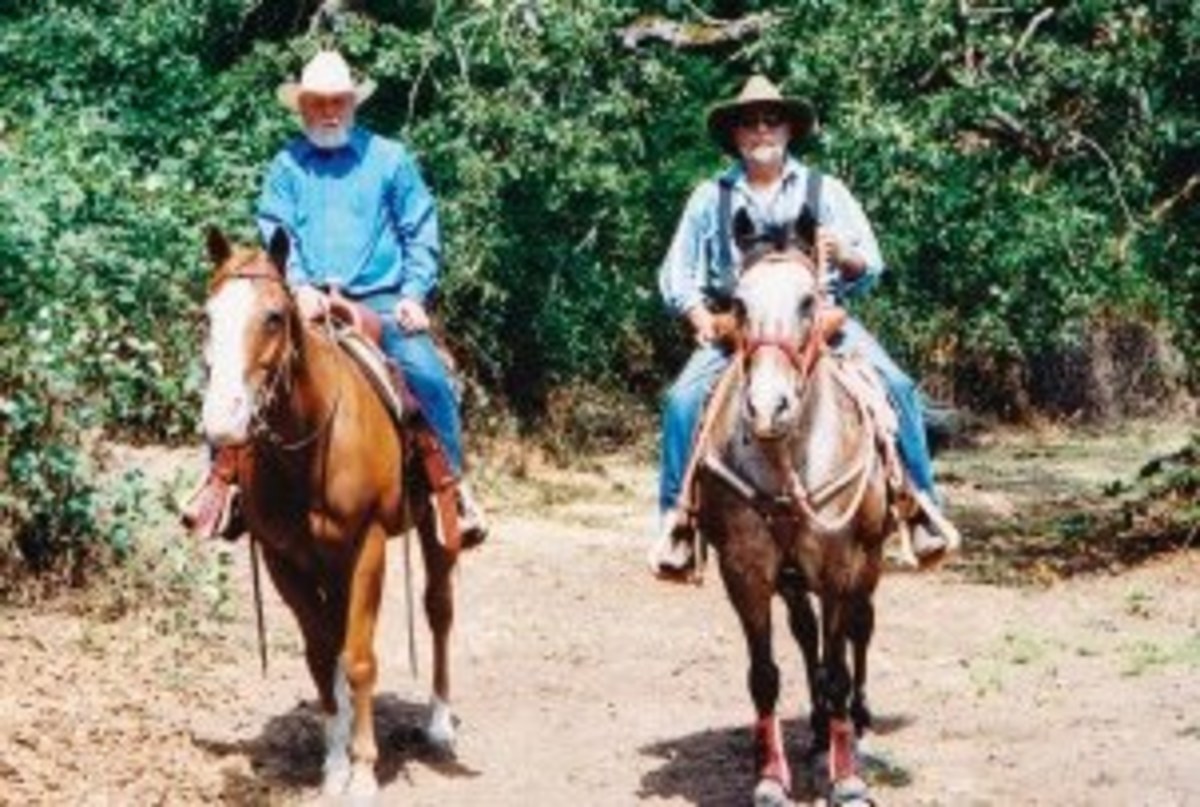
When I ride my 7-year-old Tennessee Walking Horse gelding with a group of friends on the trail, my horse tends to pay more attention to the other horses than he does to me. I’ve tried to ride him away from the group a couple of times; each time, he threw a fit and bolted back to the group. What can I do to change this negative behavior?
Pam Levens
Knoxville, Tennessee
You’re right to say that this is negative behavior. To correct this behavior, first understand your gelding’s survival instincts. Your horse is a prey animal and a herd animal. Whenever you’re with your horse, you make up a herd of two; you have to become the leader of the herd. Your gelding is deriving his security from the other horses on the trail, not from you.
Also, you’ve allowed your gelding to bolt back to the group, reinforcing his negative behavior. You should be able to guide your gelding to any place that you decide at anytime. You can accomplish this by establishing the leadership position. He’ll then derive his security from you, and will follow your direction without throwing a fit. Here’s how to accomplish this.
On the Ground
Go back to ground work to build a strong foundation and establish your leadership position on the ground. As you work, completely focus on your gelding, and try to maintain his focus on you. If you get his focus on you 90 percent of the time, you’re doing great. If he drifts mentally, correct it immediately with a tug on the lead to bring his focus back to you.
Also, relax. Let him know you’re secure with yourself. He’ll then begin to increase his trust in you and feel more secure with you as his leader. Take charge in a nonabusive way, and project the self-confidence you have in yourself to him. When he senses that you’re self-confident and trustworthy, he’ll allow you to become his leader. Here are a few ground-work exercises you should do with your gelding.
Step 1: Perform lead-line exercises. Outfit your gelding in a halter and lead rope, and lead him to a secure arena with good footing. Work on forward motion at a walk, and practice stopping, backing up, and lateral flexion. (For details, see “Asking for the Backup,” September/October ’04; “Flex for Control,” May/June ’05, and “Bonding Exercises,” January/February ’06.)
Step 2: Longe in both directions. Deepen your leadership position further by longeing your gelding in both directions. (For details, see “Speed Control,” September/October ’06.) Tip his nose slightly toward you with his inside eye in direct focus with you. If you see his focus wandering, apply light pressure on the longe line to get his attention back on you. He’s your student, and you’re his teacher. A good teacher doesn’t allow students to goof off in class.
In the Saddle
Once you’ve established the leadership position on the ground, start under-saddle work. Make sure that your gelding does everything under saddle that you’ve taught him to do on the ground.
Step 1:Work on lateral flexion. Get your horse supple and bending well between his poll and the withers. Work on bending his rib cage and moving his hindquarters away from leg pressure. (For details, see “Head Tossing Help,” May/June ’06.) By doing these positive maneuvers, you’re teaching your gelding that you’re above him in the pecking order and that you’re a benevolent leader.
Step 2:Establish leadership on trail. Ask a friend to go on a short trail ride with you. Choose someone who’s established the leadership position with her horse and whose horse allows her to be his leader on the trail. Go on a trail where you both know the terrain well. The wider and more level the trail, the better, for training purposes.
Ride alongside your friend for a short while. Then ask your gelding to drop behind your friend’s horse. If he does this willingly, stay there for a short while. Next, cue your gelding to pass your friend’s horse and take the lead. If he does this willingly, stay there for a while, then ride beside your friend again. Repeat this exercise several times. If your gelding is doing well after a half hour or so, go to the next step.
Step 3:Drift off to the side. Slowly drift away from your friend, heading off to the right or left for a short distance. Return to your friend’s horse, then drift away again, going farther and farther each time. If your gelding has accepted you as his leader, he’ll continue to stay relaxed and feel secure.
Troubleshooting tip: If, during any of these exercises, your gelding becomes tense and starts to feel insecure with you as his leader, use direct-rein pressure to bring his nose toward his shoulder. Then bend his rib cage around your inside leg and move his hindquarters around. This will put his focus back on you.
Don’t let your gelding stop and relax until you’re sure that you’ve regained the leadership position. Once you reestablish control, allow him to stand and relax for a couple of minutes. Give him a rub, and praise him. Then continue with your exercises. Leadership means control.
Trainer J.F. Sheppard (www.horsecreekoutfitters.com) practices Responsible Horsemanship. He’s certified under top Paint Horse trainer William T. Lawrence. The Oregon resident can be reached at flyingeagle@ccountry.com






